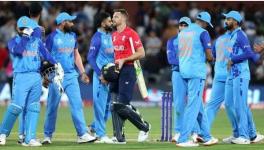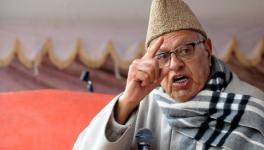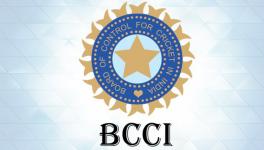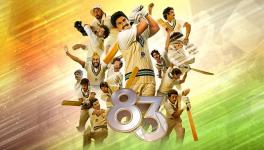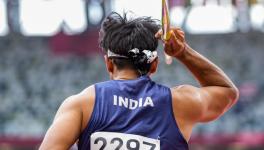Indian Cricket Ushers in a Revolution Amidst Call For Change
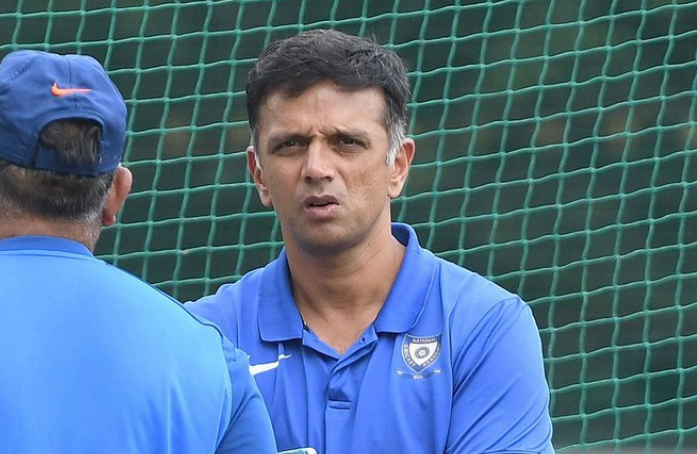
In his role as Head of Cricket at the National Cricket Academy, Rahul Dravid finds himself in the unique position of making his enormous experience, wisdom and expertise count.
Future generations might well look at 2019 as the year when Indian cricket ushered in a quiet revolution. Or they might not, because oftentimes, even in change, everything remains the same.
Bound by the far-reaching, occasionally impractical rules of governance under which cricket bodies in India must function, a host of illustrious former cricketers have either bitten the administrative bullet for the first time, retained their positions of pre-eminence or made a return after a hiatus. If the cleaning up of the Augean stables by the Justice Lodha panel was intended to get more cricketers into the system, then on the face of it, the first step towards that objective has been taken. However, where the subsequent steps lead is the million-dollar question.
As much of an old boys’ club as the Board of Control for Cricket in India might have appeared, there is no denying the robust structures put in place which ensured that for all the back-room wrangling and compromises, the game itself was never afforded secondary-citizen status. India’s climb towards the top rungs of the ranking charts in age-group and senior cricket, both men and women, across formats is the most striking testament to a process that taps, hones and refines talent from the far reaches of the vast nation. The same process also provides a livelihood to so many involved in the sport who might be very good, but not good enough to represent the national side, as well as to a host of others in a non-playing capacity.
Also Read | Support for Half-truths in Gaurav Gill’s Arjuna Award Application Shows Motorsport Body’s Desperation
The need to keep the focus trained primarily, if not entirely, on the game itself can never be emphasised enough. Administrators by and large ought to be the facilitators of the growth and the development of the sport by tapping into its vast potential for commerce, which in turn can trigger an infrastructural boom not restricted to only the influential and the traditional centres. Their blueprint must always be in consonance with the roadmaps chalked out from a cricketing perspective, a roadmap that will have the definitive touch at least for the near future of Rahul Dravid, the former national skipper.
Dravid’s foray into quasi-administration in the shape of the Head of Cricket at the National Cricket Academy is the not the first by a former India cricketer, or even captain. But in his role as the conduit between the playing group and the governing authorities, he finds himself in the unique position of making his enormous experience, wisdom and expertise count.
The elections of Mohammad Azharuddin and Roger Binny respectively to the helm of the Hyderabad and Karnataka associations lend an air of credibility that the BCCI itself requires as cricket in India finally prepares to free itself from the grip of the Committee of Administrators which, clearly, has overstayed its welcome. Plenty has been made of Azhar’s entry into cricket administration in light of his implication and subsequent exoneration in alleged match-fixing. Tongues will wag and knowing winks exchanged, but even if only on a technicality, his life-ban was overturned by the Andhra Pradesh High Court seven years back, long before which he had represented the people of Moradabad as an elected member of parliament. The matter must rest there now.
Binny and Sourav Ganguly, who remains the Cricket Association of Bengal president for the next 10 or so months, will add great depth and character as the running of the sport is certain to remain under scrutiny for the foreseeable future. The clamour to return the game to elected rather than nominated individuals has gathered force in the last two and a half years since the Vinod Rai-led CoA assumed charge. In the same breath, though, seasoned office-bearers hardly covered themselves in glory as they nitpicked about age and tenure criteria in a clear indication that they were still enamoured by the trappings of power even if the revised constitution is meant to clip their wings severely.
Also Read | R Ashwin and the Uncertain Spin in Indian Cricket Team Selection | On the Ball
The potential influx of retired internationals into the governance set-up can’t be viewed in isolation. The unprecedented influx of the kith and kin of influential and powerful individuals since ruled ineligible under the new rules of engagement reiterates the need for control, though the younger turks might take offence at suggestions that they are no more than puppets whose strings are controlled expertly either by a parent or a sibling.
Rupa Gurunath, the daughter of former BCCI president N Srinivasan, looms as the most visible in the list of offspring/sibling successors, but she has adequate company in Jaydev Shah, son of Saurashtra strongman Niranjan, as well as Arun Thakur, brother of erstwhile BCCI president Anurag, among others. The Gujarat Cricket Association has left the post of its president vacant for the time being, a position that will be filled post the BCCI AGM/elections on October 23 at which it will be represented by Jay Shah, son of union home minister Amit.
It is worth remembering that amidst the charges of power-grabbing and power-hogging, administrators of an era gone by and who are officially lost to the sport for ever have made stellar contributions to the excellent health cricket finds itself in today. If their wisdom percolates through admittedly convenient channels and is married with the knowledge and vibrancy of the younger, cricket-experienced members, then it will be a win-win for all concerned. Cynicism will perforce dictate that that is nothing more than a pipedream; fact can sometimes be stranger than fiction.
Administration of most sporting bodies in India has seldom been detached from ambitious politically-connected people with the ability and the wherewithal to clear certain obstacles and open up impossibly clogged pathways. The clichéd ‘love of the game’ is no longer even an existential concept, what with the stakes so high and everything else veering inexorably towards professionalism and therefore accountability. It takes a special breed to set everything aside, particularly when ‘conflict of interest’ seem the three most fashionable words in conjunction, and plunge into a role where the rewards are barely tangible. Agreed, no one has forced these men – and women – to embrace these challenges, but if everyone were to stay away, where will governance be headed?
Also Read | Mat Finished: A Wrestling Icon’s Bout Against Time
For all its myriad flaws and perceived incomprehensible machinations, cricket continues to be the path-breaker that other disciplines, sometimes enviously, attempt to emulate. The sustained excellence of the national team is often held as the reason for cricket’s popularity and its propensity to attract the big commercial investments. But this excellence hasn’t come about by accident.
The immediate task once the new set of worthies occupy various positions in the BCCI will be to augment the processes already in place. And initiate visible ventures that will, over time, erode the air of skepticism and distrust, and restore the confidence of the most disillusioned stake-holder – the fan who makes the sport the glorious spectacle it is.
(Kaushik is a veteran cricket writer who has reported on over 100 Tests. He co-authored VVS Laxman's autobiography '281 and Beyond')
Get the latest reports & analysis with people's perspective on Protests, movements & deep analytical videos, discussions of the current affairs in your Telegram app. Subscribe to NewsClick's Telegram channel & get Real-Time updates on stories, as they get published on our website.









